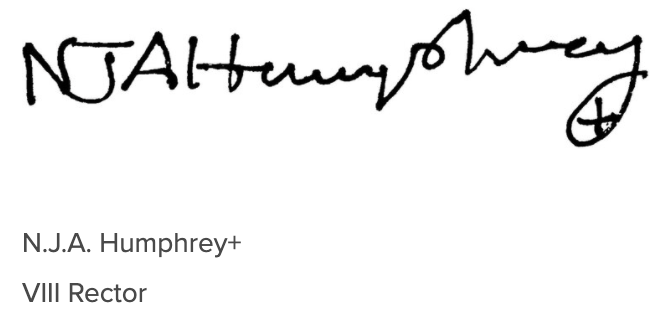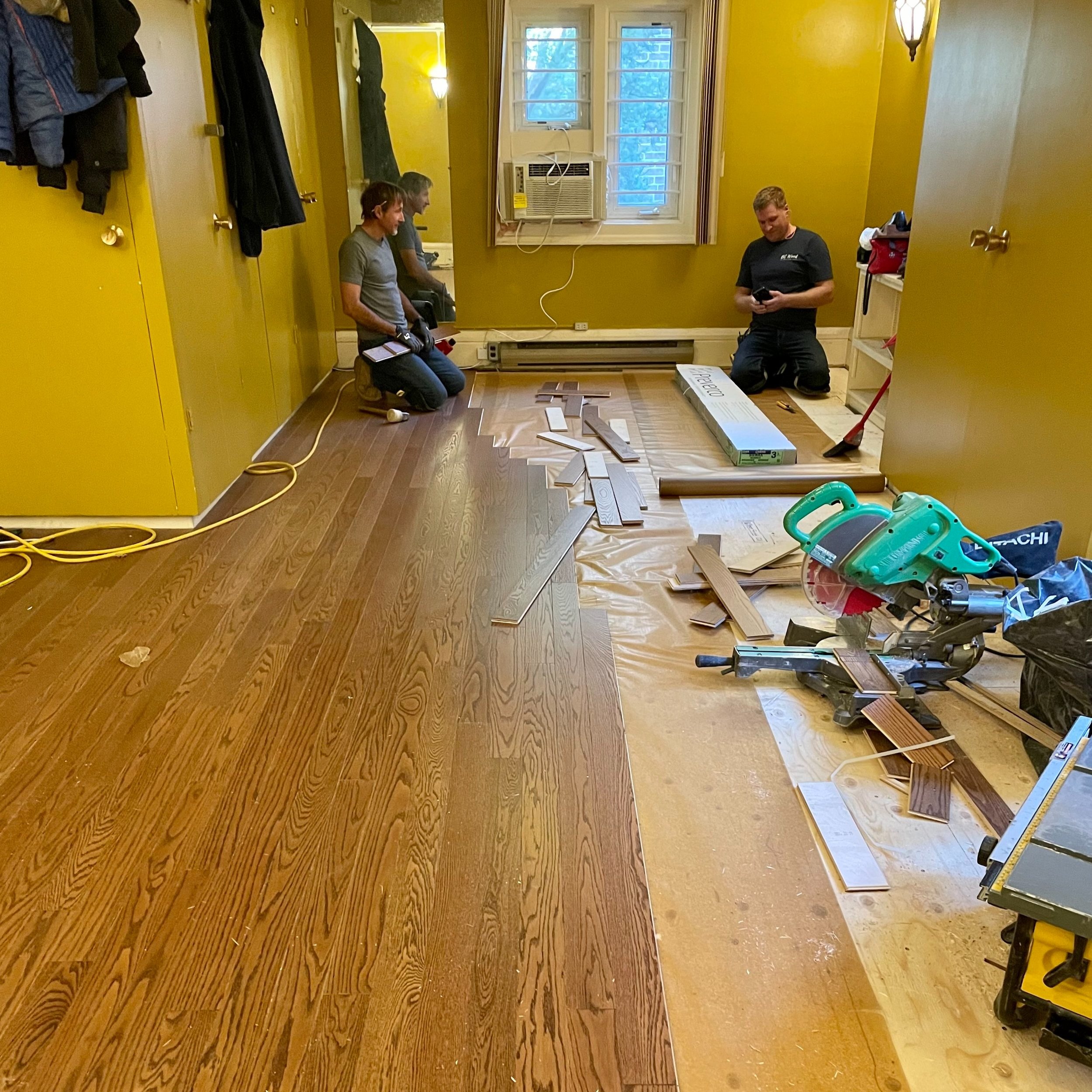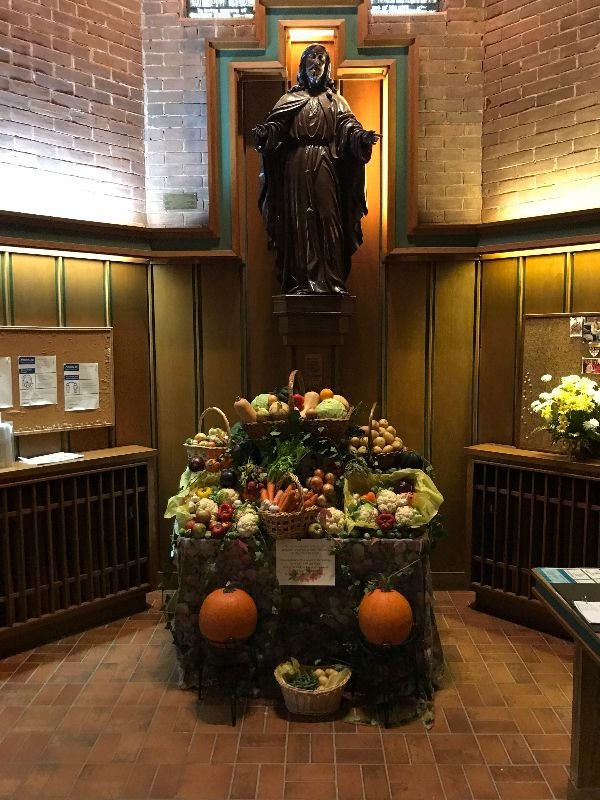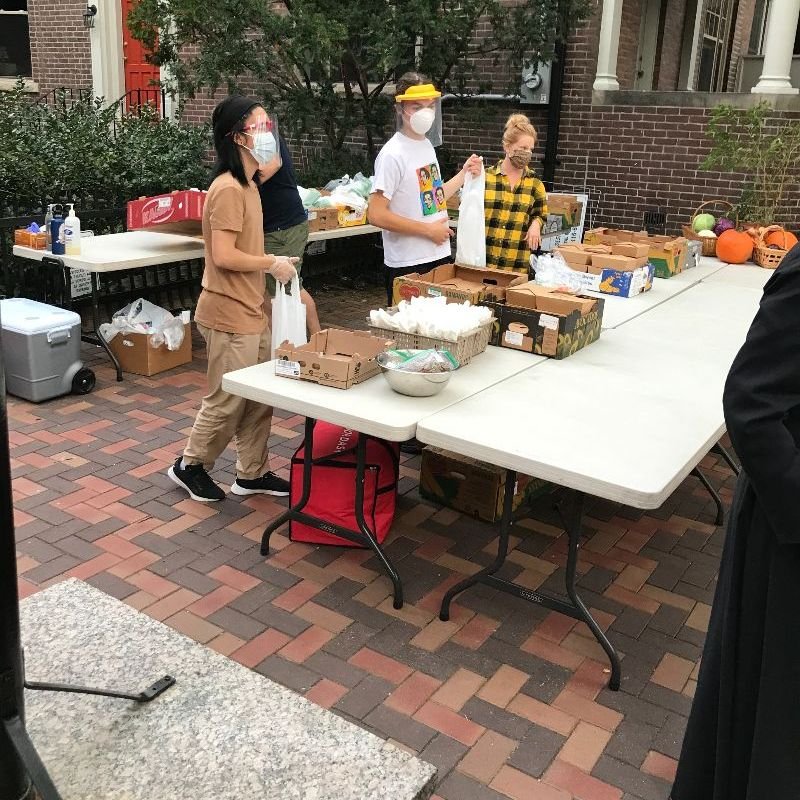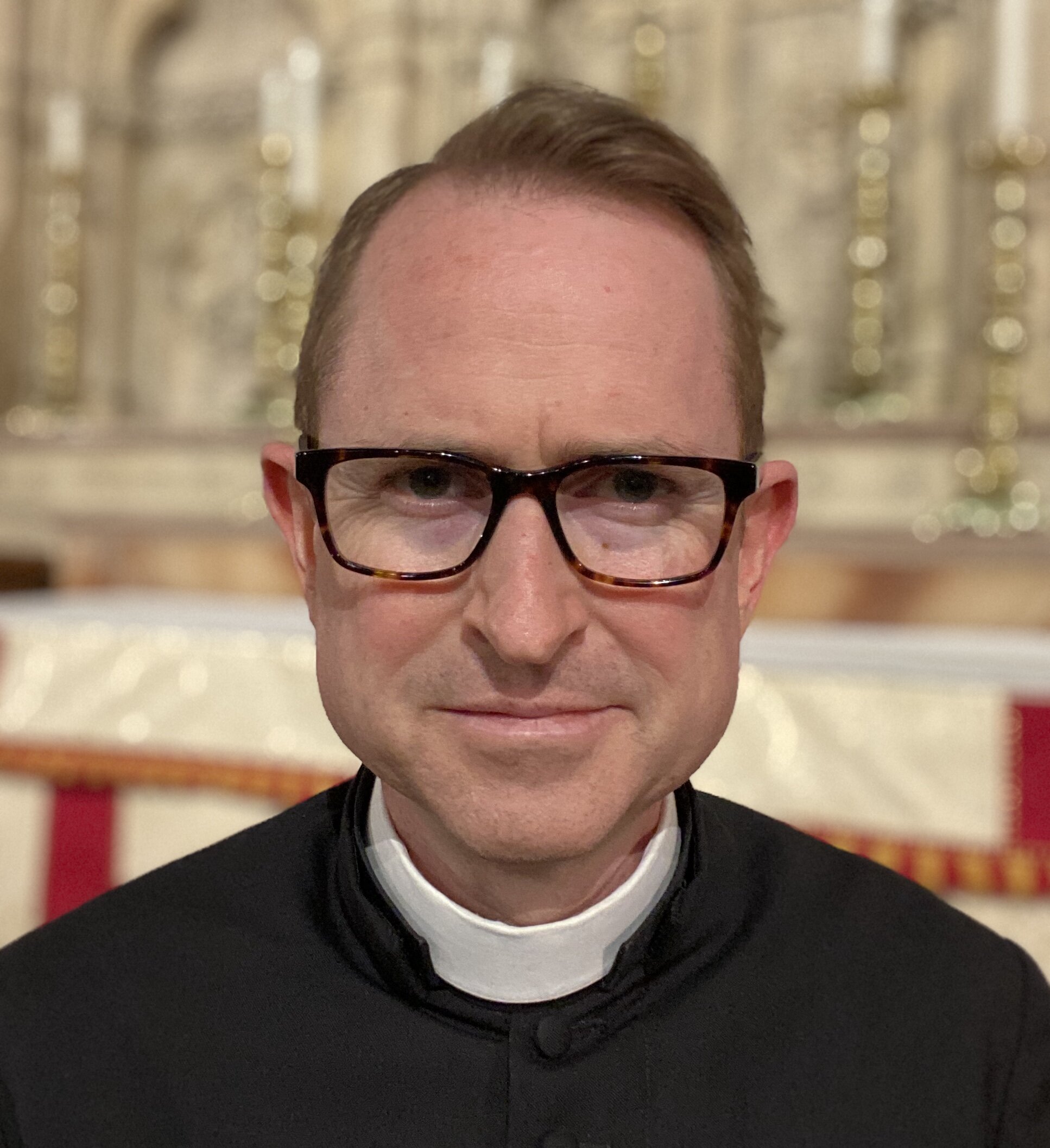Dear People, Neighbours, and Friends of St. Thomas’s,
Have you ever noticed that when you’re in a church that invites corporate additions to the prayers “silently or aloud,” the silence sometimes speaks louder than words?
I imagine most of us have been to many church services where we are invited to name those who form a part of our personal intentions. These usually fall into three categories: prayers for the sick and those in any need or trouble, prayers for the dead and those who mourn them, and prayers of thanksgiving for all the blessings of this life.
Congregations tend not to have any trouble at all naming the sick and those who care for them. The dead and those who are mourning come naturally to mind, and when we are asked to name them, a soft murmur will spread over many a congregation. But when we are given an opportunity to give thanks, “silently or aloud,” I have to assume that the silence that all too often follows must be owing to the reticence of people who do not want to come across as boastful, because otherwise I’d have to interpret the silence as a lack of gratitude to God.
“I invite your thanksgivings, silently or aloud,” the intercessor or deacon or celebrant prays, after which there’s a hush, a profound silence that stretches, thankfully, for only a few awkward seconds at most before the intercessor moves on to the next petition. Perhaps in the background a cricket chirps, a baby cries, or a horse whickers. (If you’re in a church within earshot of horses, that is.)
I think it’s much easier for human beings to name what’s amiss in their lives than to be thankful for what’s going well. There are doubtless various reasons for this. We take our blessings for granted, not being conscious of how thankful we ought to be for them until they are taken away from us. Or perhaps there’s a fear that the only thanksgiving we could dredge up would prove to be like the hypocrite who prays, “Lord, I thank thee that I am not like other people…” (see Luke chapter 18). But I began to think it was because we didn’t spend much time counting our blessings.
Years ago, this awkward silence following the invitation of our thanksgivings began to bother me. Here we all were, at the Eucharist, the Great Thanksgiving, and when asked to name those things for which we were, in fact, grateful, no one said anything. However, I decided that because I can’t force anyone to name out loud something that they’re thankful for just to make me feel less bothered about it, I would try to reflect in my own actions the change I wanted to see and hear in other’s prayers. So I started preparing a list of things for which I could give thanks without relying on a spur-of-the-moment burst of grateful sentimentality, and I landed on a simple idea: No matter what was going on in my life, I would always be vocally thankful for my wife and children, even if I felt in that moment that they weren’t feeling very thankful for me!
At pretty much every Mass for well over a decade now, whenever I have been at a church service where our thanksgivings were invited “silently or aloud,” I have always tried to say, whether softly or loudly, “I give thanks for Anne, Margaret, and Andrew.” Often, I tack on “Rich and Linda,” Anne’s parents, as well, because they’ve been such a central part of my life and of our children’s lives. If the intercessor is patient and gives us more than a couple of seconds in which to vocalize our thanks, I will also add Anna, my sister, and her husband, Jason, who do so much to take care of my ailing father, David, who is in memory care in California, whom I remember when praying for the sick.
If I have even more space to give thanks, I name the people who make it possible for us to be together in worship at that moment: staff members and volunteers and lay leaders, the congregation, et cetera, et cetera. Because I get to edit the boilerplate language for thanksgivings, I try to build that into the script, as for instance we do currently when the intercessor reads, “I bid your prayers for God’s blessings upon all people; and we give thanks to God for the people, neighbours, and friends of this parish, and especially for all those present with us in person or via livestream; our newcomers and visitors this morning, both near and far; and for all other thanksgivings we now name, silently or aloud ______. May God’s abiding presence be with us always, and may we be a blessing to all people.”
It’s particularly important to me to remember the three overlapping “constituencies” that St. Thomas’s serves in the Venn diagram of our people, neighbours, and friends, to whom this letter is addressed each week, recognizing as well that since the pandemic, our newcomers and visitors have included people who have never set foot inside our door, some of whom have never been to Toronto or anywhere else in Canada, for that matter. I am profoundly grateful for those who make a virtual pilgrimage to St. Thomas’s without ever leaving their homes, even as I hope they will some day be able to do so, and I pray that St. Thomas’s may indeed be a blessing to all people.
In our corporate worship, it’s the “______” that provides for the most capacious prayer, provided we don’t rush it. When I’m in charge of leading the prayers, I’ve had to train myself to be comfortable with an awkward silence, because sometimes it takes a bit of awkwardness to get our brains to pay attention, to start thinking about what we’ve just been invited to do.
This is the third Anglo-Catholic parish I’ve served as a priest. In the other two parishes, when I arrived, no one ever named any thanksgivings out loud unless they were already written into the script. It was always pro forma. I’m not a huge fan of extemporaneous prayer, to be honest. I was raised an Evangelical in a “We just want to thank you, Lord, we just want to…” tradition of prayer, which often struck me as far more artificial than reading prayers out of a book that have been prayed for centuries by holy and not-so-holy men and women alike. My favourite forms of corporate intercession don’t provide any fill-in-the-blank moments at all, because they’re the easiest. But prayer shouldn’t necessarily be easy. Maybe when we’re invited to give thanks we should pause and ask ourselves, “Am I actually thankful for anything today?”
Beginning this Advent, we will be priming the pump of thanksgivings, so to speak, by focusing on anniversaries centred on the sacramental life of the church. We will not give thanks for birthdays as a matter of course, but we will remember and give thanks on baptismal anniversaries, confirmations, wedding anniversaries, and ordination anniversaries. We will be compiling these thanksgivings from our database. If you would like to opt out of being prayed for by name on the anniversary of your baptism, for instance, just let Christine know at office@saintthomas.on.ca and we will try to ensure that your privacy is respected. But we do want to raise up the importance of baptism as our birthday into the church, and if you think the database doesn’t include your baptism or confirmation date, feel free to provide us with that.
Otherwise, when next you are invited to share your thanksgivings, silently or aloud, even if you’re not comfortable saying anything out loud, do me a favour, if you would, and come to church mindful of one person, place, or thing for which your heart is truly grateful, and offer it up before the throne of God when invited to do so in the silence of your prayers, and if the Spirit moves, give voice to it, as well. Over time, perhaps, we will begin to sense a church that is more palpably and audibly thankful for all the many blessings of this life, and in our awareness of our gratitude, are better equipped to be a blessing to all people.
Yours in Christ’s service,
N.J.A. Humphrey+
VIII Rector
CONFESSIONS IN ADVENT
Christmas Day is a mere two weeks away, and the clergy are available by appointment to meet with you to make your confession in preparation for this great feast, so “that we, without shame or fear, may rejoice to behold his appearing,” as the proper preface for the season of Advent promises us. If you have never made your confidential confession before, or have never experienced the liberating power of the sacrament of reconciliation in the way it is intended as a gift from God, you are warmly invited to do so this year. The easiest way to make an appointment for a confession with Fr. Humphrey is to visit rector.youcanbook.me at your convenience to choose a time during his office hours on Tuesdays, Wednesdays, and Thursdays. You can also arrange a time to meet on any day of the week except for Mondays via email: frhumphrey@stthomas.on.ca. Likewise, Fr. D’Angelo may be reached via frdangelo@stthomas.on.ca and Fr. Shire via frshire@stthomas.on.ca. Any of the clergy who serve as celebrants of our weekday Masses would also be happy to be of assistance, and the parish clergy can easily put you in touch with any priest whose contact information you do not already have. Fr. D’Angelo is compiling a list of area clergy who are available to serve in this capacity, and all members of St. Thomas’s are encouraged to make their confessions to a priest prior to Christmas and Easter every year, and at other times as may be advisable for the comfort and edification of their souls. —Fr. Humphrey














